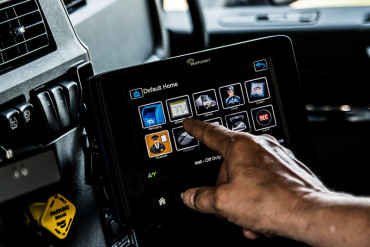Getting ready for ELDT: Deadline looms for new driver training rule

Waiting for the next regulation to take effect is a way of life in the trucking industry. Last year’s electronic logging device mandate, and changes to the hours-of-service regulations before that, are part of an ongoing cadence of new requirements that cause carriers and drivers alike to evolve and adapt to new realities of business and life on the road.
The clock officially is ticking on the next compliance date set to take effect on Feb. 7, 2020, in the form of entry-level driver training (ELDT).
Officially titled Minimum Training Requirements for Entry-Level Commercial Motor Vehicle Operators, the final rule published by the Federal Motor Carrier Safety Administration in late 2016 will enact new federal requirements in an attempt to standardize today’s existing patchwork of training curricula that are developed at the state level.
The final rule puts the onus on commercial driver’s license schools, as well as carriers with inhouse CDL training programs, to self-certify in a yet-to-be- deployed Training Provider Registry (TRP) and to overhaul entry-level driver training courses. Laura McMillan, vice president of training development for Instructional Technologies, said the self-certification process was modeled after FMCSA’s National Registry of Certified Medical Examiners.
Currently, the U.S. Department of Transportation only mandates four topics for CDL training providers: hours of service, driver qualification and disqualification, health and wellness and whistleblower protection. The new rule will require schools and trainers to provide 31 specific theory courses as well as 19 behind-the-wheel (BTW) skills courses, and driver candidates are required to have an 80 percent pass rate
in theory courses and to demonstrate proficiency in all 19 BTW skills required.
The ELDT final rule also establishes new minimum standards for both theory instructors and BTW instructors.
“There will be requirements for teachers and instructors working directly with students, whether in the classroom or in a behind-the-wheel capacity,” said McMillan. “The big increase people will feel – the entities providing training and certainly the people going through the training – is there will be an increase in curriculum standards.”
McMillan said the new ELDT rule could exacerbate the driver shortage, as schools that currently provide CDL training will be unwilling or unable to meet the new requirements and could fall away as a resource for training.
“But it provides an opportunity for schools that are prepared to expand their operations, including carriers that do adopt inhouse training,” she said. “It is expected that many carriers, either private fleets or for-hire carriers, will be reenergizing inhouse CDL training programs or starting up CDL training programs” in an effort to control their own driver pipelines.
Another challenge CDL schools and carriers with CDL training programs will face is a lack of qualified training professionals.
“Schools maybe don’t realize it now because there are only minimal standards at the state level for an instructor, but they will feel it when the switch is flipped to the new law and there are very concrete qualifications for instructors,” said McMillan. “Also, the integration with the TRP and complying with the federal standard – not just having the curriculum in place, which is a challenge as well, but to have that integrated with a TRP – is going to be a significant challenge for many schools in operation today.”
It remains to be seen what impact the ELDT final rule will have on carrier operations once it takes effect in nine months, but it’s not a stretch to assume that an already constricted labor pipeline into an industry in sore need of new drivers will be put to the test. But as the trucking industry always seems to do, it should find new ways to weather the storm and thrive on the other side.
